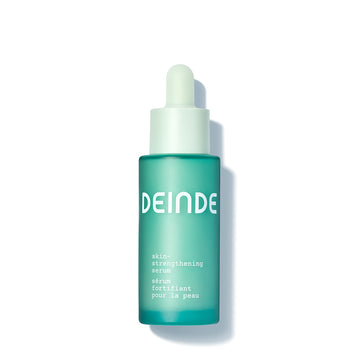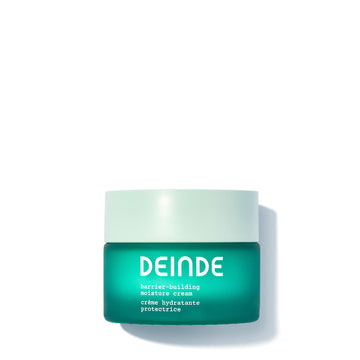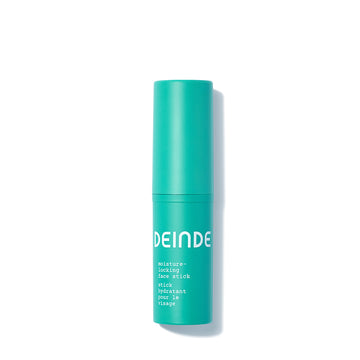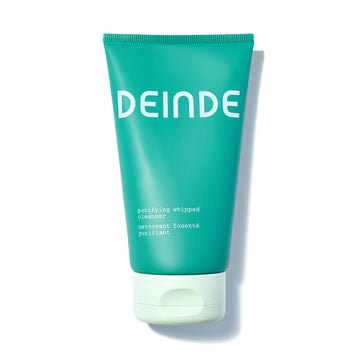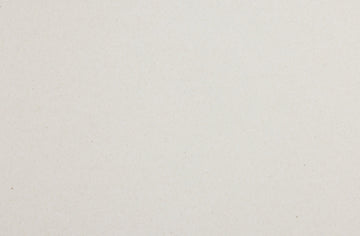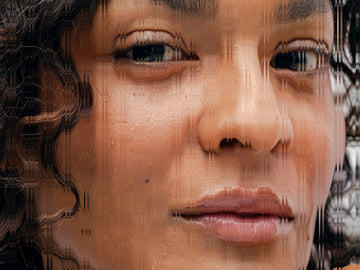
What Is Sallow Skin?
In a perfect world, our natural complexion would always be radiant, hydrated, and dewy. In reality, our skin acts as a protective shield from pollution, stress, and dirt— and much like us, it has its good days and its bad days.
Over the years, skin starts to showcase the common suspects of aging: fine lines, wrinkles, dullness. While we’re all familiar with these classic signs, we’d like to highlight a less commonly recognized, but equally important state: sallow skin.
Sallow skin refers to a complexion that appears yellowish or pale, often due to a lack of healthy blood flow or underlying health issues. Beyond skin discoloration, this condition can make skin look dull and tired. Often, aging and sallow skin are mistaken for each other, when accelerating factors actually differ.
What's Happening at a Cellular Level?
At a cellular level, sallow skin is driven by several complex cellular processes — namely glycosylation-induced skin discoloration and inflammation.
Glycosylation is a complex process where chains of sugar molecules bind to skin proteins and lipids, weakening skin elasticity. Advanced glycation end products (AGEs) alter the structural integrity of proteins such as collagen and elastin, leading to a loss of firmness and elasticity. Glycosylation can also modify pigments due to diminished protein ability to transport and synthesize melanin.
Inflammaging, chronic low-grade inflammation, can further accelerate changes in cellular activity. When skin exists in a chronically inflamed state, it disrupts the normal processes of the skin. This ongoing stress damages skin cells and encourages the formation of an uneven texture, fine lines, and other visible signs of aging.
What Are Signs of Sallow Skin?
There are a few key indicators of sallow skin. Here are some of the most common:
- Skin discoloration → Pale skin may have yellow undertones, warmer skin may appear browner, and darker skin may become uneven with a mild yellow hue
- Dullness → When skin lacks sufficient collagen and elastin, it lacks vitality. Dull skin is a telltale sign that your skin needs support
- Uneven skin tone → Sallow skin is characterized by areas of dullness or discoloration. This patchy coloration is due to the accumulation of AGEs that modify skin pigmentation
- Fatigued and tired appearance → A combination of AGEs, oxidative stress, and inflammation leads to the development of fine lines and wrinkles, making skin look aged and exhausted beyond its years
What are The Most Common Causes of Sallow Skin?
The dull, tired, yellow-tinged appearance that is sallow skin can either be linked to lifestyle or biological causes. Identifying the drivers to a sallow state is key to developing a targeted mitigation plan to ensure your complexion doesn’t look aged beyond its years.
→ Aging
As skin ages, there is a gradual reduction of skin elasticity and thickness, which contributes to a sallow appearance. Blood flow and cell turnover slow during the aging process — essentially, our ability to replace old skin cells with fresh cells is interrupted, contributing to a dull appearance. Lifestyle factors, like sun exposure, compound over the years to accentuate signs of aging. Inflammaging and AGEs accelerate an already natural process, highlighting fine lines, wrinkles, and discoloration.
Target aging by → Celebrating a life well lived! Aging is natural. If you’re worried about accelerated aging, start by understanding inflammaging, reaching for topical products that target chronic low-level inflammation, and ensure you’re living a healthy lifestyle
→ Photoaging
Photoaging, chronic UV radiation exposure, triggers the breakdown of collagen and elastin fibers. If these structural proteins are impacted, skin can look aged without firmness and elasticity. It all comes back to inflammation — UV-induced inflammation accelerates glycosylation (AGEs), which modifies skin pigmentation.
Target photoaging with → Feel free to enjoy the sun, but with coverage (long sleeve, sun hats, etc.), hydration, and broad-spectrum sunscreen. Look to brightening ingredients like Vitamin C and redness-reducing ingredients like Naringenin to topically mitigate the effects of UV damage and reduce discoloration
→ Anemia
When the body lacks sufficient red blood cells, less oxygen is delivered to skin cells due to the body prioritizing vital organs over the skin — and this can take a toll on your overall skin health. If cells are deprived of vital oxygen and a reduced blood flow, skin becomes pale or pallid, exhibiting a sallow complexion.
Common reasons behind anemia include iron or vitamin deficiencies, which hinder the production of hemoglobin (protein in red blood cells that carry oxygen) and vitamins (like vitamin B12 and folic acid). Note that sallow skin is a primary indicator of anemia.
Target anemia by → Treating with iron and vitamin supplements — if you suspect anemia, consider going to your primary care doctor for an assessment
→ Hormonal Shifts
Hormone imbalance often exacerbates existing skin conditions that lead to sallow skin. When the body exists in a state of stress, high cortisol levels make skin more sensitive to external influences, allowing for the rapid development of sallow skin.
During menopause (typical in women between the ages of 45-55), estrogen levels decline and reduce collagen production, resulting in loss of skin firmness — indicators of sallow skin. Hormonal imbalances, like elevated androgen levels, increase oil complexion and clog pores — impacting skin color and texture.
Target hormonal shifts by → Stress management, balanced nutrition, hormone-specific skincare, medical intervention if needed
→ Dehydration
When skin lacks moisture, it looks dull and tired — that’s the basis of dehydration. Dehydrated skin doesn’t have enough water content to maintain its optimal cellular function, often resulting in a loss of skin elasticity. Excessively dehydrated skin may cause disrupted skin barrier function, making skin more sensitive to external stressors.
Target dehydration with → Adequate hydration and a moisture-rich skincare routine. Electrolytes may also be helpful in restoring your parched skin
→ Stress
Hello stress, old friend. Prolonged stress triggers the release of cortisol, the infamous stress hormone that loves to disrupt the biological balance in the skin’s ecosystem. Notably, elevated cortisol levels impact the lipid barrier — increased water loss, dryness, and skin sensitivity are just a few of the elements that contribute to a dull and tired complexion.
A state of chronic stress is linked to the release of pro-inflammatory cytokines. The outcome? Skin discoloration, fine lines, and wrinkles that are the telltale signs of sallow skin.
Target stress with → Full nights of sleep, movement, a healthy diet, stress-reduction techniques
How do I prevent Sallow Skin?
Sallow skin can often be calmed through good ol’ health habits. With proper attention and care, you can restore your skin’s natural radiance:
- Ensure you’re following a healthy, nutrient-rich diet full of fresh foods and vitamins to fill nutritional gaps and maintain your overall health. Supplements are encouraged
- Reach for topical antioxidants to ease free radical damage
- Exfoliate regularly — Exfoliating helps to diminish dead skin cell buildup and reduce hyperpigmentation
- Reduce inflammaging. Chronic inflammation accelerates already fragile environments. We encourage you to read “What Is Inflammaging? Causes, Symptoms, And Treatments" to understand what’s going on behind the scenes and best practices to ease signs of accelerated aging and support healthy skin
Studies cited:
- Programmed cell death in aging | NCBI
- Anaemia and skin disease. | NCBI
- Antioxidants in dermatology | PC
- Systemic antioxidants and skin health | NCBI
